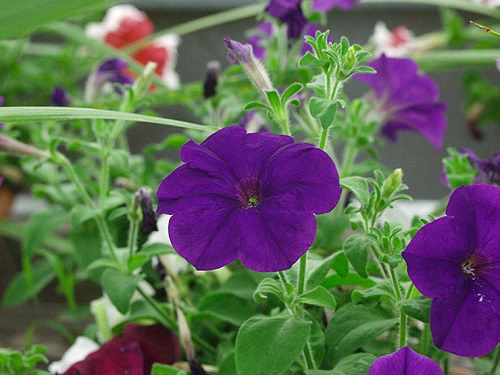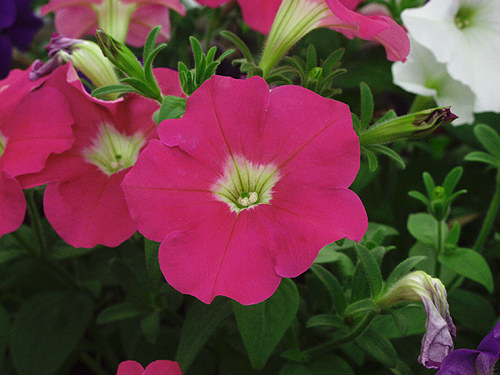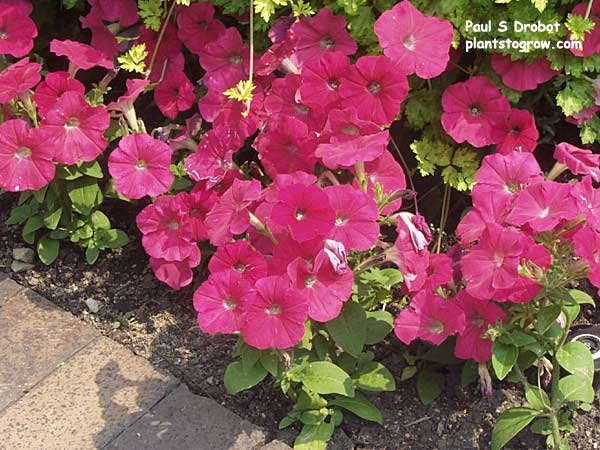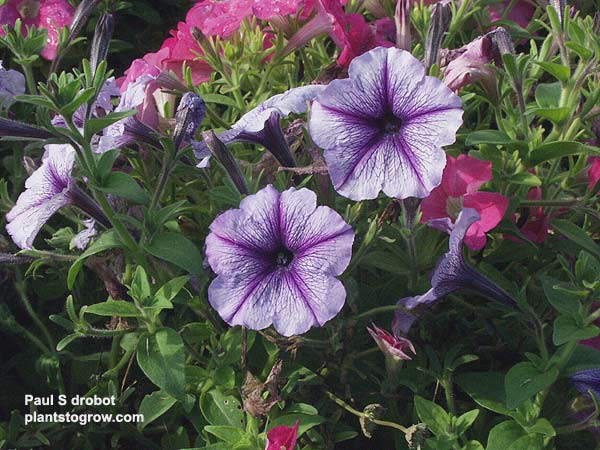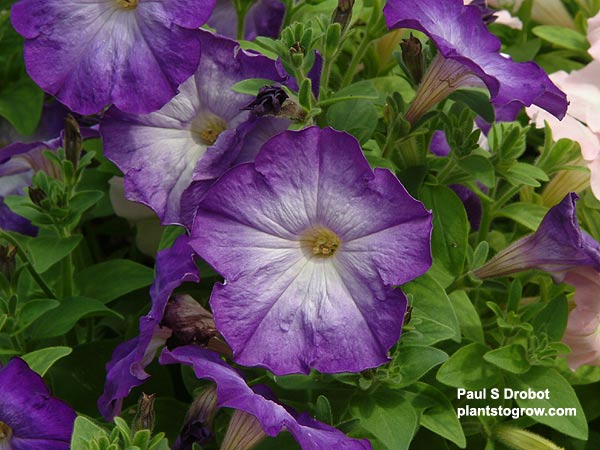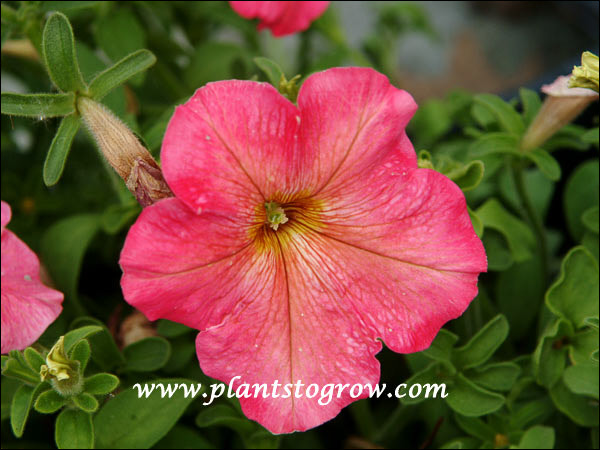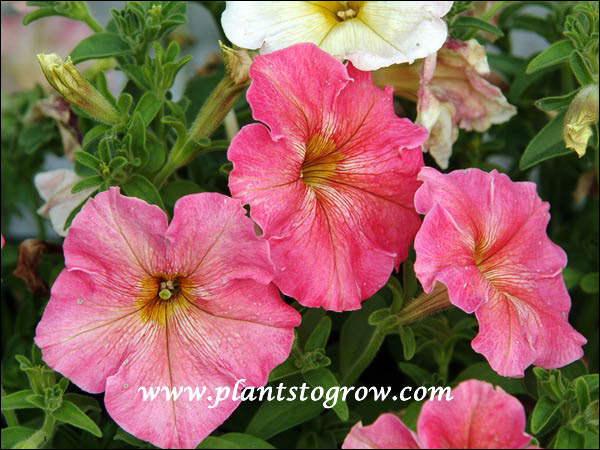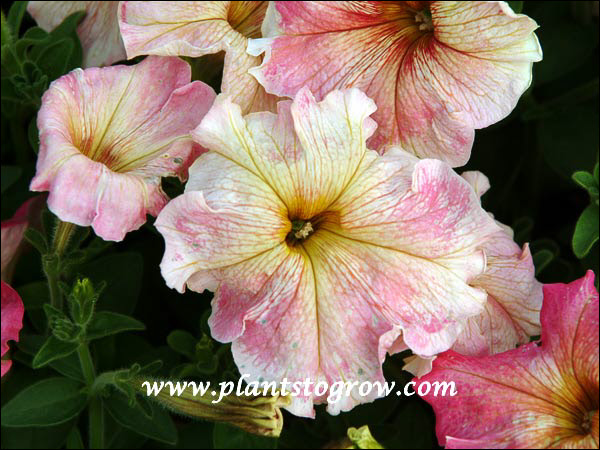| Description | Multifora Petunias produce lots of medium sized flowers. They tend to be better weather tolerant than some of the grandifloras. Come in singles, doubles and cascading. |
|---|---|
| Plant Type | All Plants, Annuals |
| Sunlight | Petunias do best in at least one half day of sunlight. |
| Moisture | average |
| Soil & Site | Prefer well drained but will tolerate average, never soggy. |
| Growing Media | average patio |
| Temperature | Acclimated plants are very tolerant of cooler to cold temperatures. In zone #5 they do best in the early spring to early summer (May-June), have a tendency to slow down in the hot drier months and than come on strong in the cool fall (mid-September-October). With a little protection I have had Petunia's in bloom on Turkey Day. Hardened Petunias can be plant in early May (zone #5) |
| Flowers | Flowers are a funnel shaped corolla tube flaring into a broad lip. The flower sits in a calyx consisting of five sepals. Size varies from 1 to 4 inches. Just about every color is found in this plants palette including bicolors, veined, etc. |
| Leaves | The leaves are alternate and covered with a viscid pubescence, making them sticky when pinched |
| Maintenance | Multifloras need less pruning and pinching thasn many of the other Petunias. Container plants need to be pruned to keep the plants compact. Deadheading will promote longer bloom time in both bedded and container grown plants. Plants in the garden may need cutting back in the hotter times of the year. |
| Propagation | seeds |
| Misc Facts | The first Petunia was discovered in Brazil, by a French commission in 1823. Petunia nyctaginiflora was white, night blooming and sweet scented. Most of the original plants were produced by crossing P. nyctaginiflora with P. viloacea and P. bicolor. By 1840 the Petunia was a fashionable plant. Most plants are listed today as Petunia x hybrid. Petunia is derived from the French word petun a Brazilian name for tobacco. |
| Notes & Reference | #28-Cottage Garden Annuals (Clive Lane) , #40-Herbaceous Ornamental Plants (Steven Stills) , #51-Armitage's Manual of Annuals, Biennials, and Half-Hardy Perennials (Alan Arimitage) |

Cart
